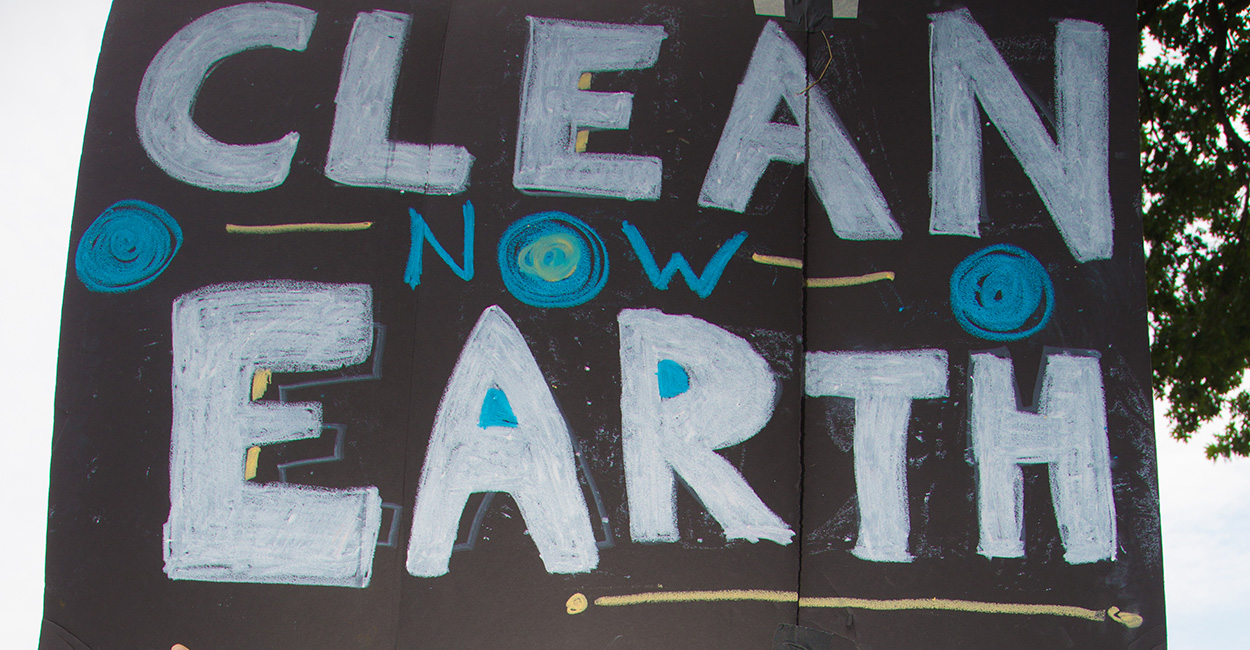How Big Money Impacts Environmental Policy
Kevin Mooney /
Is big money dangerously and improperly compromising environmental policy?
Climate change advocates have long asserted that the fossil fuel industry “bought” science—i.e., paid scientists for favorable findings—to strengthen its efforts to defend techniques such as offshore drilling and, in recent years, hydraulic fracturing or fracking.
The latest example of this is the case of Willie Soon, an astrophysicist with the Harvard-Smithsonian Center for Astrophysics, who made enemies when he published a peer-reviewed paper in January that questioned the mathematical models the Intergovernmental Panel on Climate Change uses to predict climate change.
The ink had barely dried on Soon’s paper, which found the panel’s models had mathematical errors that overstate the impact of carbon dioxide on the climate, when the trouble began.
First, it was The New York Times with a report that raised questions not about Soon’s conclusions but about conflicts of interest in his research because he had received more than $1.2 million from the fossil fuel industry that he had not disclosed.
Greenpeace went a step further with a “case study” that showed Soon “has received substantial funding from the fossil fuel industry for most of his scientific career.”
Soon received less than $60,000 per year from Smithsonian.
According to a report from the Heartland Institute, the money he received was part of a 10-year $1.2 million grant from the Smithsonian, which took a 40 percent cut and did not disclose to Soon its own donors.
Rep. Raul Grijalva, D-Ariz., ranking Democrat on the House Natural Resources Committee, followed the Soon news with letters to seven universities demanding documents on how prominent climate skeptics at those schools obtained their funding.
Grijalva’s letters targeted an all-star list of climate change skeptics in academe—among them David Legates at Delaware, who was Soon’s mentor, Judith Curry at Georgia Tech, Richard Lindzen at Massachusetts Institute of Technology, Roger Pielke at Colorado and Steven Hayward at Pepperdine.
Not to be outdone, the leaders of the Senate’s green caucus—Edward Markey of Massachusetts, Barbara Boxer of California and Sheldon Whitehouse of Rhode Island—sent letters to 100 fossil fuel companies, trade groups and other outfits “to determine whether they are funding scientific studies designed to confuse the public and avoid taking action to cut carbon pollution, and whether the funded scientists fail to disclose the sources of their funding in scientific publications or in testimony to legislators.”
But according to conservative groups, when it comes to mobilizing people and resources to extract policy outcomes from government, climate change advocates have also been guilty of doing so.

Both climate change advocates and opponents are mobilizing people and resources to extract policy outcomes from government. (Photo: Newscom)
And a lot of the funding to shape policy on that side of the debate comes from tax dollars.
According to Paul Driessen, a senior policy analyst with the Committee for a Constructive Tomorrow, six prominent environmental groups received $332 million from federal agencies between 2010 and 2012 for their research into climate change.
Driessen, who examined tax records of recipient organizations, found the Environmental Protection Agency, Fish and Wildlife Service, National Oceanic and Atmospheric Administration, United States Agency for International Development, U.S. Army, and State Department transferred government money to green groups such as the Environmental Defense Fund, Friends of the Earth, Nature Conservancy, Natural Resource Defense Council, National Wildlife Fund and Clean Air Council.
“If members of Congress are genuinely concerned about conflicts of interest, they should send letters to institutions with researchers on the administration’s side of the climate debate that benefit from the billions of taxpayer dollars spent promoting alarmist positions,” Driessen wrote in a blog post.
Despite studies highlighting the economic benefits and safety record of fracking and other innovative drilling techniques, government officials at different levels have worked to block such practices.
Denton, Texas, in the very heart of oil country, has outlawed extraction within its limits in recent weeks. New York Gov. Andrew Cuomo, a Democrat, banned fracking in his state last December. And in March, the Obama administration announced it was moving forward with new federal regulations on fracking through the Interior Department.
On to Pennsylvania
The results of these policies can be seen the length and breadth of the Marcellus Shale region, which cuts across the Southern Tier and Finger Lakes regions of New York, northern and western Pennsylvania, eastern Ohio, western Maryland, and much of West Virginia.
With New York off limits for fracking, the action has moved to Pennsylvania, where a proposed pipeline would help Pennsylvania producers sell the natural gas they harvest from the Marcellus Shale. The 114-mile PennEast Pipeline would carry the gas from Dallas, Pa., in the Poconos, to Mercer County, N.J.
One study, from the Concentric Energy Advisors, shows it’s a good deal for ratepayers—it’s enough low-cost gas to heat 4.7 million homes and would have saved New Jersey consumers almost $900 million if it had been in place by winter 2013-2014.
Despite those potential benefits, Delaware Riverkeeper Network, a non-profit based in Bristol, Pa., that enjoys substantial financial support from the William Penn Foundation, is pushing back against the pipeline.
It has built its arguments against the pipeline around allegations that it would lead to environmental degradation.
The conclusion of the pipeline debate may provide another example of how outside money shapes policy positions.
